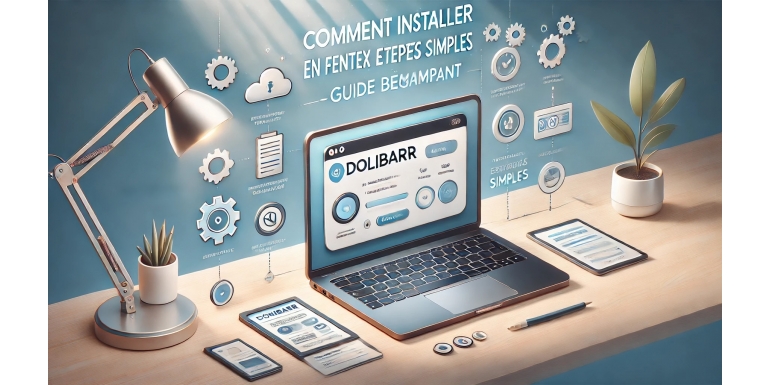
Dolibarr is a powerful and intuitive open-source ERP/CRM software that can greatly simplify the management of your business. Whether you are an entrepreneur, an SME, or even a freelancer, Dolibarr offers a flexible solution for managing sales, inventory, billing, and much more. This step-by-step guide will walk you through installing Dolibarr quickly, even if you're a beginner.
Step 1: Check System Requirements
Before starting the installation, make sure your environment meets the following requirements:
- Web Server: Apache, Nginx, or IIS.
- PHP: Version 7.4 or higher.
- Database: MySQL or MariaDB.
- SSH or FTP Access: To download and configure files if necessary.
If you are using a web hosting service like OVH or IONOS, these tools are typically already available. If you're installing Dolibarr locally, you can use solutions like XAMPP or WAMP.
Step 2: Download Dolibarr
Go to Dolibarr’s official website at https://www.dolibarr.org to download the latest stable version of the software. You can choose between two main formats:
- Packaged Version: Ideal for quick installation on preconfigured environments like Windows or Mac.
- Source Version: For advanced users or those installing on a server.
Once the file is downloaded, extract it to a directory of your choice.
Step 3: Set Up Your Server
If you are using a web server (locally or on a host), follow these steps to prepare for installation:
-
Copy the Files: Place the extracted Dolibarr files into your server's root directory. For Apache, this might be the
htdocsfolder (XAMPP) orwwwfolder (WAMP). -
Create a Database: Log in to your MySQL management interface (phpMyAdmin or equivalent) and create a new database for Dolibarr. Note down the database name, username, and password as you'll need them later.
-
Set Permissions: Ensure that the Dolibarr directory and its subfolders have the correct write permissions (chmod 755 or 777, depending on your configuration).
Step 4: Launch the Installation Wizard
Now that your server is ready, it’s time to launch the installation wizard:
-
Open a web browser and enter your server’s address followed by the folder where Dolibarr is located. For example:
http://localhost/dolibarr. -
The installation wizard will open automatically. Follow the step-by-step instructions:
- Language: Select your preferred language (e.g., English).
- Prerequisite Check: The tool will verify if your server meets the necessary conditions. Fix any errors before proceeding.
- Database Configuration: Enter the database information you created in the previous step.
- Administrator Account: Create an admin user to manage Dolibarr.
-
Once all the information is entered, click on “Install.”
Step 5: Finalize the Installation
After the installation is complete, you will be redirected to Dolibarr’s login screen. Log in using the admin account you created.
At this stage:
- Delete the
installdirectory in the Dolibarr files for security purposes. - Access Dolibarr’s modules through the interface to configure the features you need, such as billing, contact management, or inventory tracking.
Post-Installation Tips
Now that Dolibarr is operational, here are some tips to optimize your experience:
- Backups: Set up regular backups of your data to avoid accidental loss.
- Extensions: Explore the available modules and extensions to customize Dolibarr to your needs.
- Updates: Regularly check for updates to benefit from the latest features and fixes.
Conclusion
Installing Dolibarr is a simple and accessible process, even for beginners. With its user-friendly interface and numerous features, this software can become an invaluable ally in managing your business. By following this guide, you’ll be ready to leverage everything Dolibarr has to offer in no time. So, why wait? Get started today and simplify your daily operations!
